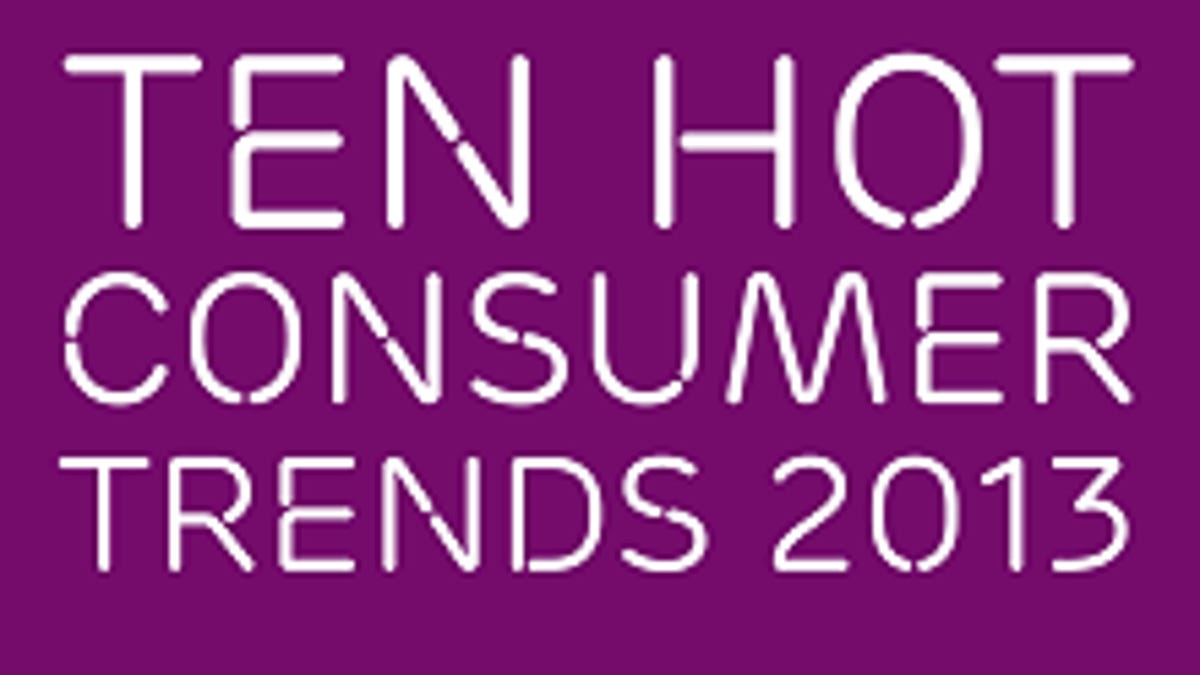Report tags top consumer trends for 2013
Cloud computing, youth culture, and personal gadgets in the workplace are some of the trends noted in a report from electronics-maker Ericsson's ConsumerLab.

Cloud computing is one of the main trends to keep an eye on in 2013, according to a new report from Ericsson.
The electronics firm's "Ten Hot Consumer Trends 2013" report (PDF) suggests that not only is cloud computing becoming increasingly important in our daily lives, but young people's use of the Internet will drive new businesses and products in the coming year.
The most important technological trend is cloud computing. More than 50 percent of tablet users and 40 percent of smartphone users in the U.S., Japan, Australia, and Sweden subscribe to these kinds of services owing to the improved simplicity associated with being able to connect multiple devices -- such as a Mac, iPad, and iPhone -- through the cloud, making file-sharing and synchronization less of a hassle.
Market intelligence firm IHS iSuppli also found consumer-focused cloud-based services to be one of the biggest hits this year, backing up this prediction. The company said that the number of cloud-based service subscriptions surpassed 375 million in the first half of 2012, and this number is expected to rise to 625 million worldwide in 2013.
Michael Björn, head of research at Ericsson's ConsumerLab, says, "Our global research program is based on annual interviews with over 100,000 individuals in more than 40 countries and 15 megacities. Over the years we have amassed a huge database of consumer trend data -- and we see that the pace of change is currently more rapid than ever."
The report says that not only are purchase patterns higher for tablets compared with desktop PCs but also that women are driving smartphone mass-market adoption. Varied uses for smartphones, including image sharing, social networking, the use of location-tracking technology, and coupon redemption are higher for women than men.
57 percent of smartphone users said they use their gadgets in the workplace, and there's a rising trend of bring-your-own-device (BYOD) gadgets such as Google's Nexus 7 and Apple's iPhone. Ericsson says another trend is the use of such devices for "work, to send e-mails, plan business trips, and find locations."
Smartphone use is not only expanding in the workplace -- 32 percent of smartphone users surveyed said they already shop with their gadget in order to try to avoid lines and to make price comparisons quickly. With the induction of smartphones and a global commerce network now firmly established online, this trend is unsurprising. We look for the best deal, and if we can save a few cents by performing a quick search online -- as well as miss the elbow-digs of stressed mothers and the wail of children dragged around when Christmas shopping -- why not?
Ericsson also says that the humble television is becoming more social. 62 percent of viewers use social forums when watching their favorite show, and 42 percent of users enjoy discussing things they watch. With the induction of "smart TVs" and the rumors of Apple TV testing, the merging of broadcasts and social networks is unlikely to stop anytime soon.
The other top trends Ericsson believes businesses should keep an eye on are the transformative powers of technology in the classroom; the use of social networks and mobile gadgets by those living in cities to keep connected and exchange ideas; and the increasing use of personal networks online instead of traditional structures to stay informed and hunt for jobs.
Ericsson ConsumerLab bases its annual report on interviews with 100,000 people worldwide, in more than 40 countries and 15 "megacities."

